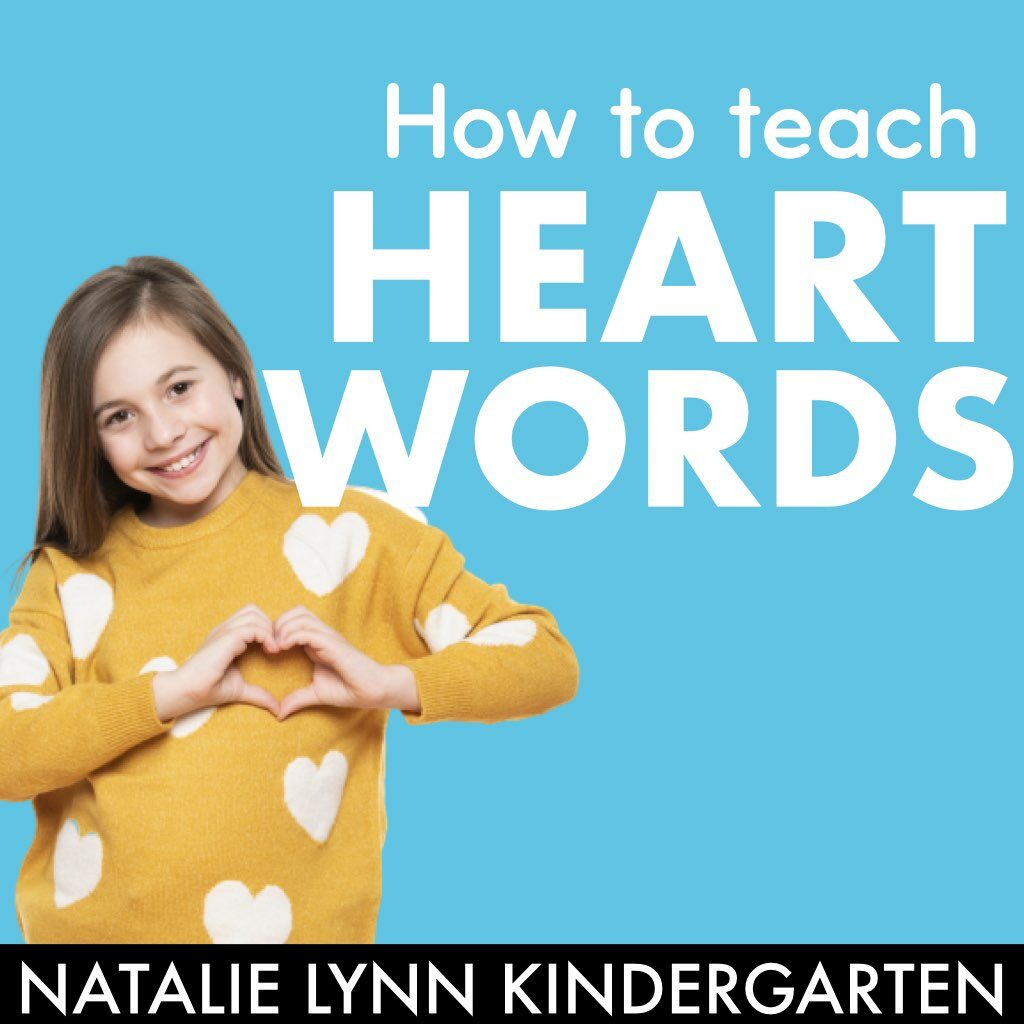
In this post: Are you new to the Science of Reading and wondering how to teach heart words? This blog post will walk you through the steps!
For years, I struggled with teaching sight words in Kindergarten. It seemed like no matter what I did, there were the kids who got them and the kids who didn’t.
I remember teaching a small guided reading group using a leveled book. The book repeated the same patterned sight word sentence of every single page.
And on every. single. page. there was one word that a student just could not remember.
To say I was frustrated was an understatement.
But I had already had the student say the word, spell the word, mix and fix the word, and tell me what was missing in the word more times than I can count (if you know, you know).
In my mind, there was nothing more I could do. The student had to memorize the word.
I wish I had known then what I know now!
There is a better way to teach sight words.
This blog post will take you through the process of how to teach heart words so that they stick.
Heart words vs. sight words vs. high frequency words
What is the difference between heart words and sight words? Or heart words and high frequency words?
With all of these terms, it’s easy to get confused!
What are sight words? While sight words are often used synonymously with high frequency words, sight words actually refer to any word that has been 100% committed to memory. ANY word can be a sight word. Sight words are words that can be recalled immediately on sight. Our goal with teaching high frequency words or heart words is that they will become sight words.
What are high frequency words? High frequency words are the most common words that make up the texts we read. High frequency words can be decodable – like on, at, or can – or they can have an irregular sounds – like said, the, or could. When students begin reading, it is important that we teach high frequency words along with phonics and decoding so that students can begin reading sentences.
63% of high frequency words are decodable when all regular spelling patterns are taken into account.”
Reading Rockets
What are heart words? Heart words are high frequency words that have an irregular part – the part students need to know by heart. However, instead of thinking that students just have to memorize these words, we know that we can use a process called orthographic mapping to give those words a connection in students’ brains.
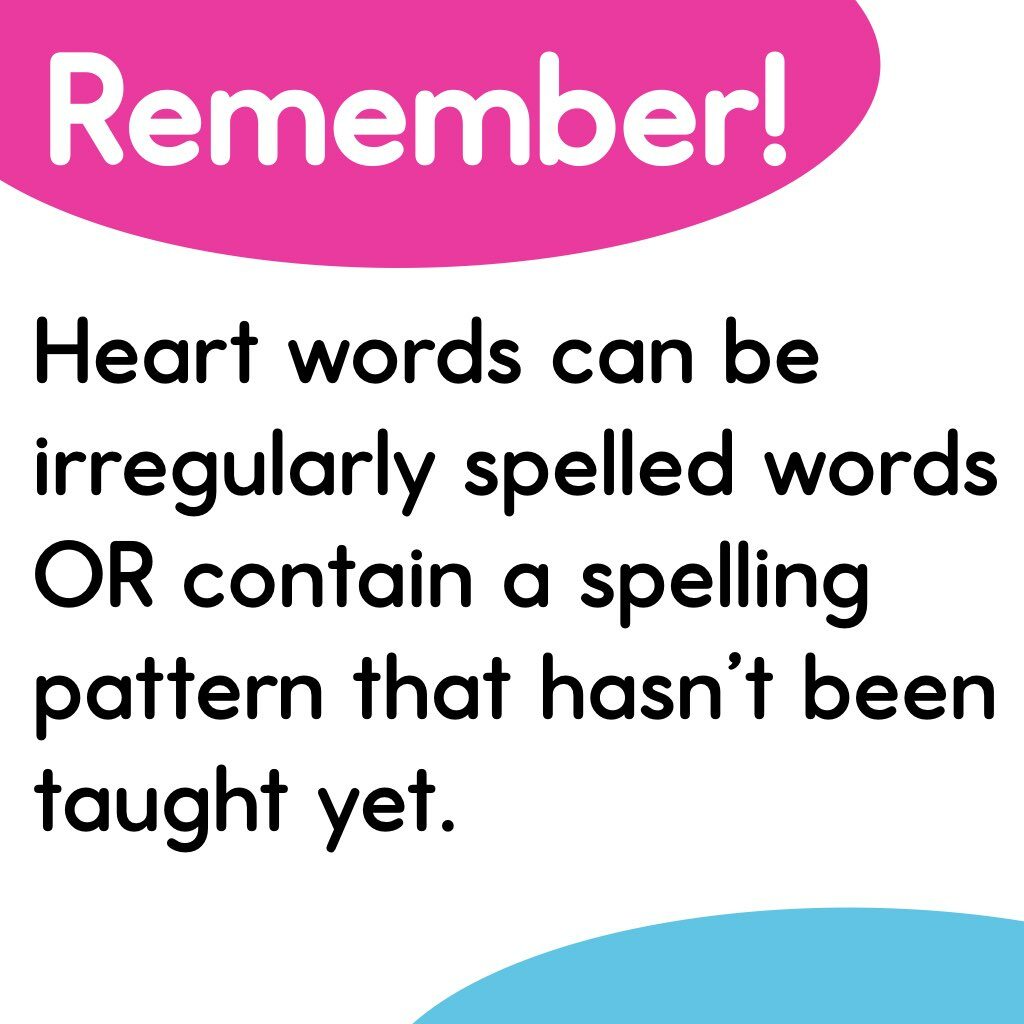
The irregular part of a heart word can be a truly irregular sound, or it can be a phonics pattern that has not been introduced yet.
For example, the word play would be a heart word in Kindergarten because students have not yet learned that ay is a long a vowel team.
However, once students learn this vowel team, the word play would no longer be a heart word. It would be fully decodable to them.
The goal is to have as few heart words as possible!
How to teach heart words
You might be saying, this is all great, but I am brand new to the Science of Reading. HOW do I introduce and teach heart words? I have no clue what orthographic mapping even means!
I’ve got you!
Let me walk you through how to teach heart words step-by-step.
1. Say the word
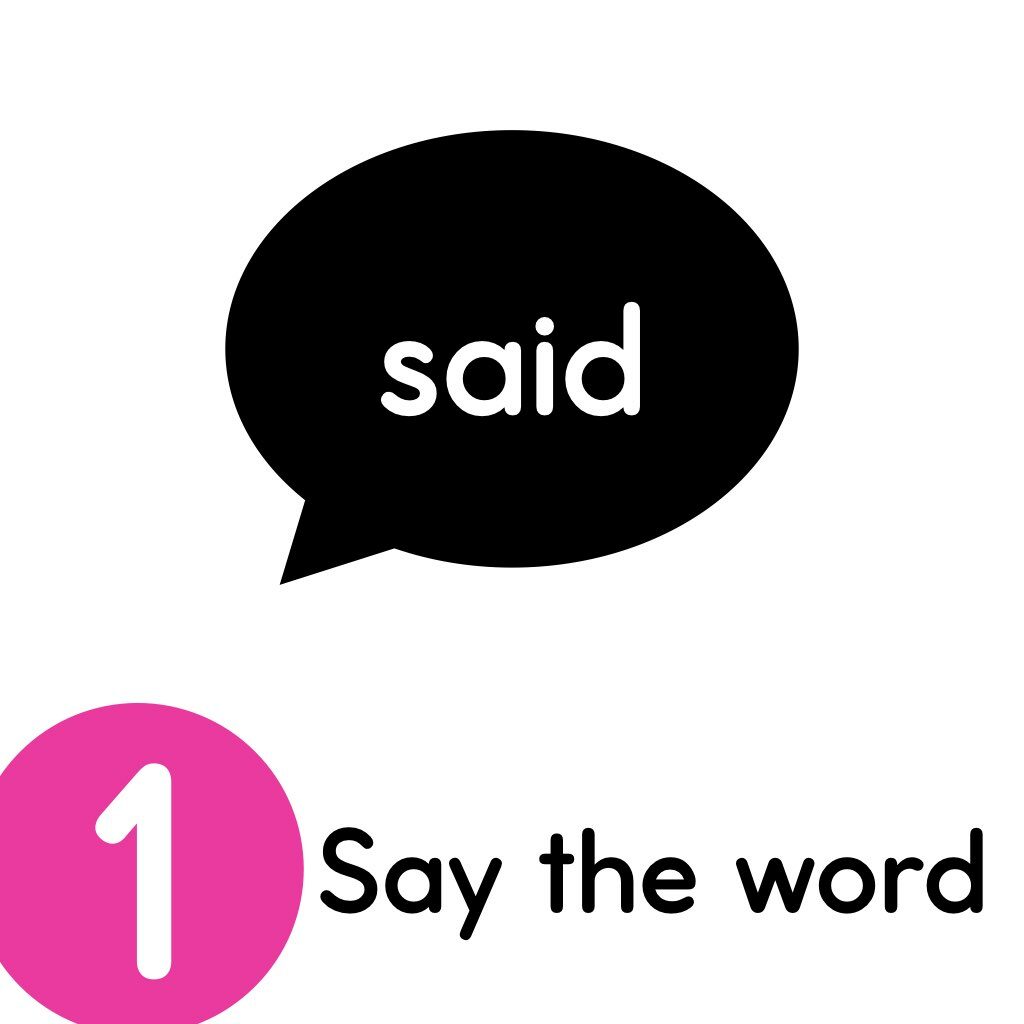
The first step in how to teach heart words is to say the word. Say the word and have students repeat the word. Use the word in a sentence. Then, say the word again.
2. Segment the word and count the sounds
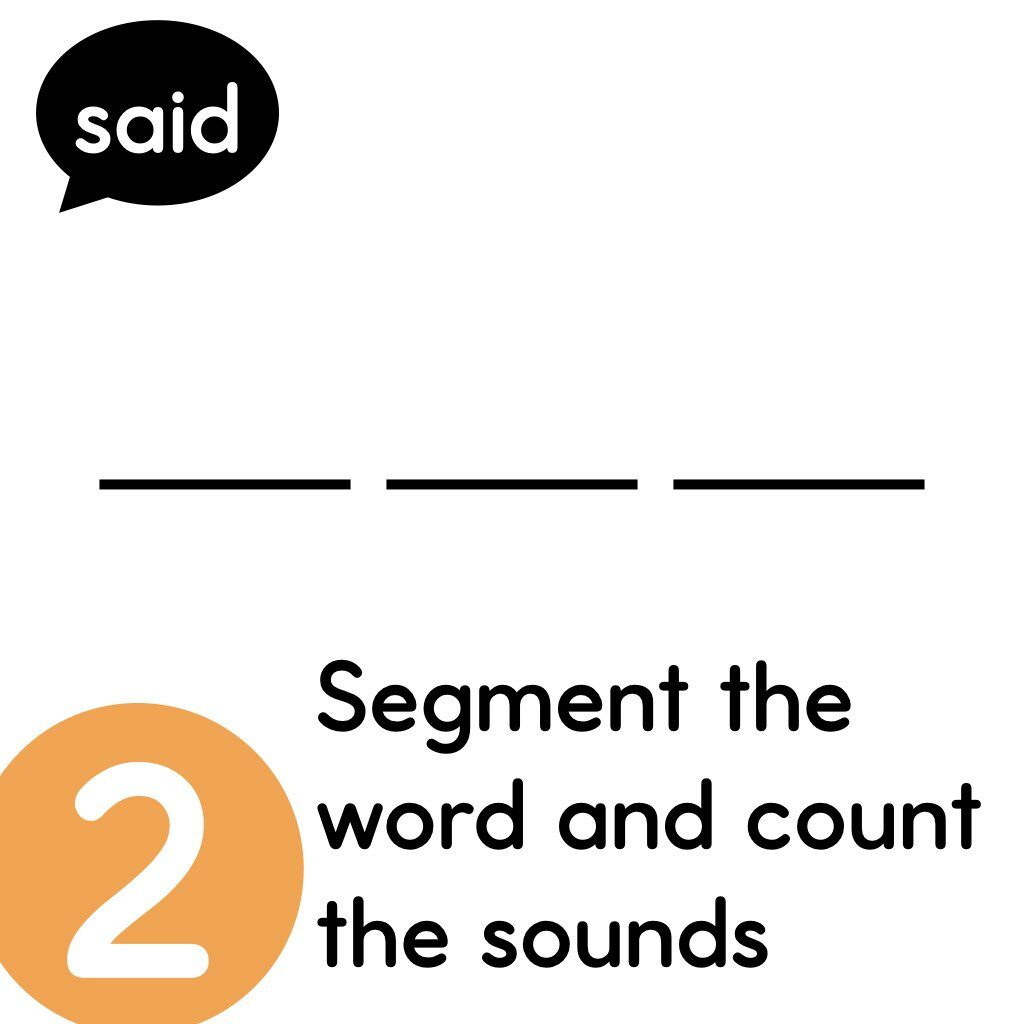
The next step in teaching heart words is to segment the word.
This is why it is important that students have a strong phonemic awareness background before working on high frequency words! You want your students to be able to break that word apart and hear the individual sounds.
For the word said, this would sound like /s/ /e/ /d/.
Next, have students count the sounds in the word.
For the word said, we can count three sounds. We will draw one line for each sound that we hear.
Now, you and I know that said has four letters. But the point here is that we are teaching students to take the sounds that they are hearing and connect them to symbols.
So we draw three lines, one for each sound.
3. Have students help you spell the regularly spelled sounds
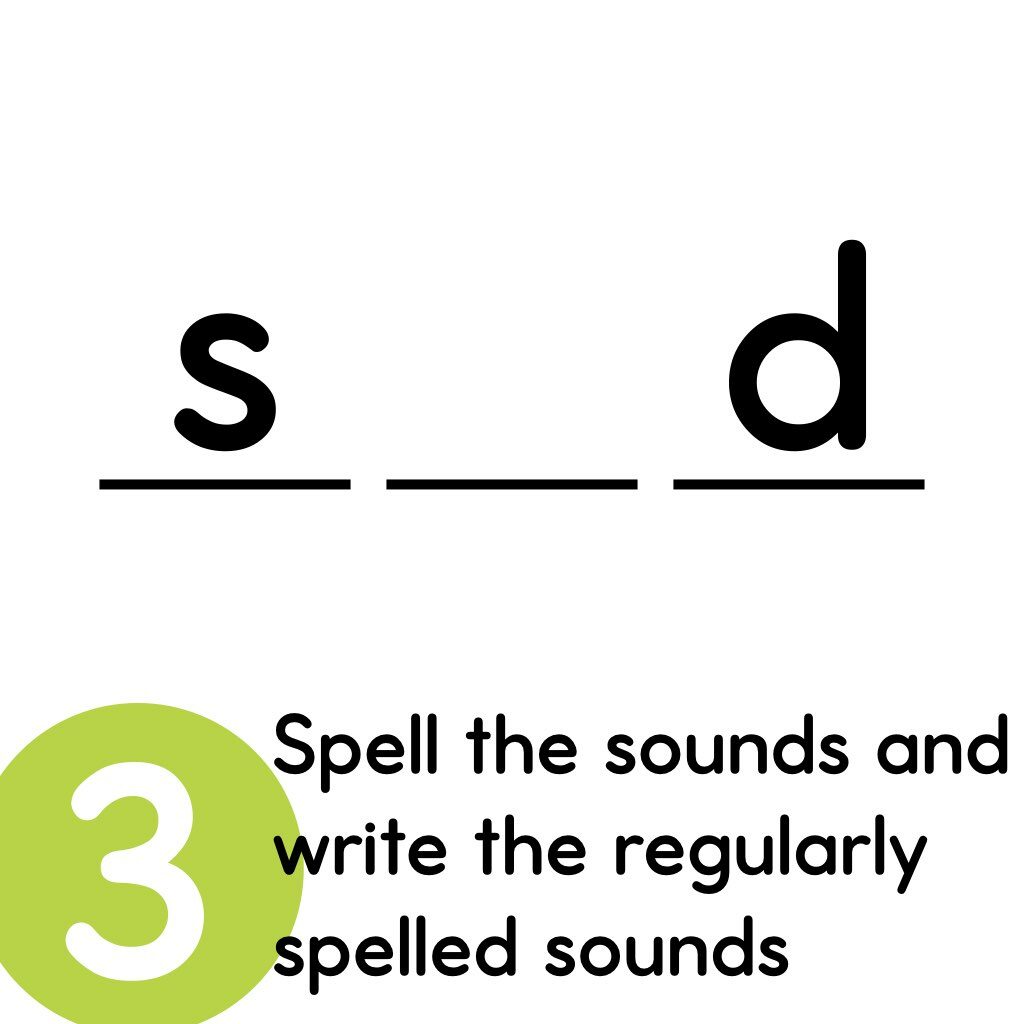
Now that you’ve segmented the heart word into its sounds, you can spell those sounds and connect them to their written symbols.
For the heart word said, I would ask students to help me spell the first sound /s/ and the last sound /d/. We would write those letters on the lines.
For the heart word play, I would ask students to help me to spell the first to sounds /p/ /l/.
The word can is not a heart word because it is 100% decodable to beginning readers.
When mapping this word, students would help me write all of the sounds on the lines – /c/ /a/ /n/. There would not be a heart part.
Sometimes you may see people do this part with sound boxes. They will map and graph the word.
By map the word, we mean they will map the sounds. That can mean tapping or pushing the sounds up into the sound boxes or placing counters in the boxes as they say the sounds.
Then, they will graph the word. Graph means “to write.”
They will write each sound in a box, the same way you would write it on the lines.
No way is better than the other! It all comes down to personal preference.
4. Introduce the irregularly spelled sound and heart it
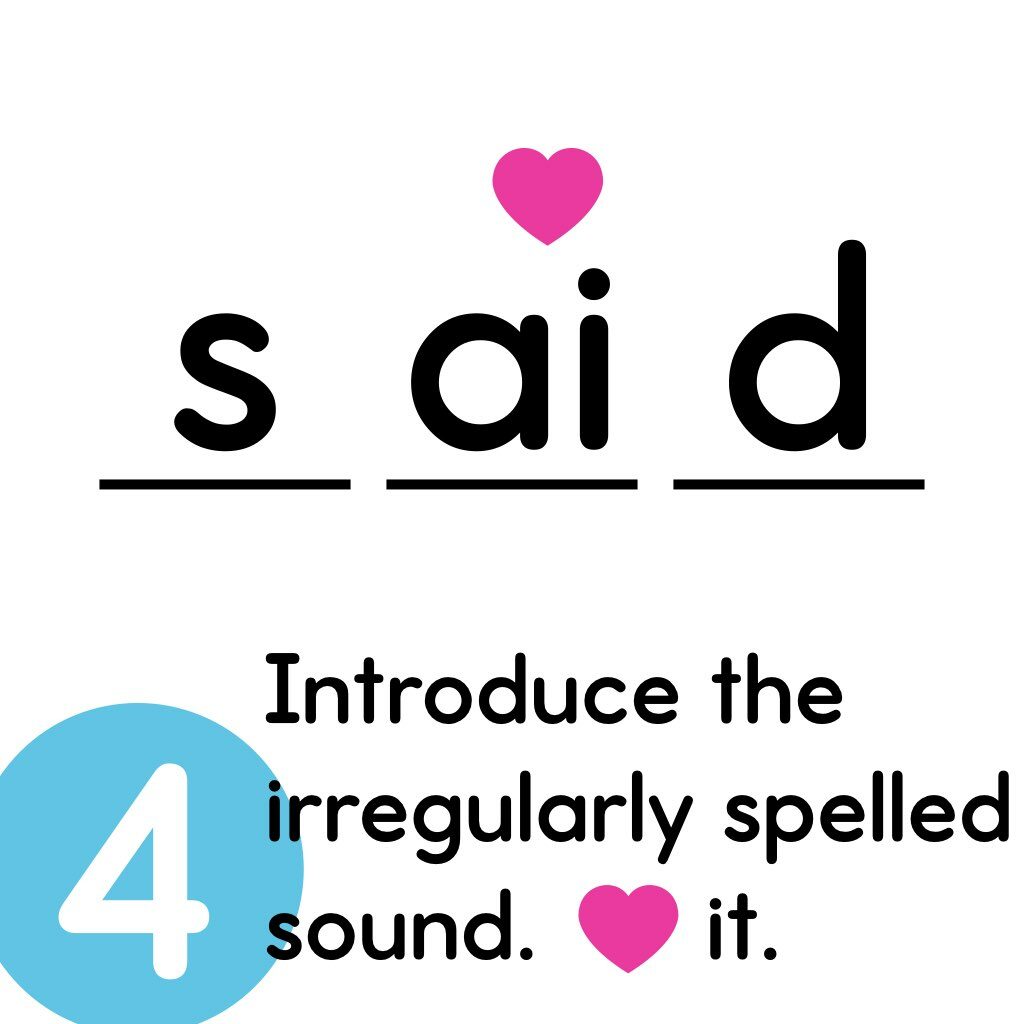
Now we get into the meat of how to teach heart words; the heart part of the word.
When teaching heart words, you can ask students what sound they hear and how they would normally spell it. This is optional, but it helps them connect to that sound better.
For the word said, students would say that they hear the short e sound and they would spell it with an e.
Then, I would say, “In this word, the sound /e/ is spelled with an ai. This is the trick part that we need to know by heart!”
I would write the ai on one line because it is one sound.
Then, we would draw a heart over it.
The heart reminds students that this is the tricky part of the word that they need to know by heart.
When students practice this word in the future, they will draw a heart over that part as well.
Can a heart word have more than one heart part?
Yes!
Remember, heart words can have irregularly spelled sounds or phonics spelling patterns that students have not yet learned.
Words can have more than one tricky part, such as was. The a makes the schwa sound and the s makes the /s/ sound.
Words can also have a tricky part and a spelling pattern that students have not yet learned, such as the. In this word, the th make a sound that is regular for the digraph th.
However, since this is one of the first high frequency words taught in kindergarten, students will not yet have learn the sounds of digraph th.
That means that the th is a heart part for them.
In the word the, the e makes the schwa sound. Therefore, it is also a heart part.
This is one of the few heart words that is 100% made up of tricky sounds.
practice, practice, practice
Now that you have introduced the heart word, it is time to practice!
You will want to make sure that your students have plenty of practice with the heart words in different ways.
They should see those high frequency words in the texts that they are reading every day.
You can have them practice the high frequency words in hands on centers and using worksheets.
Really, it’s no different than teaching and practice sight words! But the big difference is that our heart word practice activities will focus on the orthographic mapping process rather than activities to memorize the shape of the word or the word as a whole.
After we have introduced a heart word, I like to have my students practice mapping the heart word on their own heart word worksheets. These allow students to practice the words in a variety of different ways as well.
If you’re looking for heart word worksheets for your students, I have FREE editable heart word worksheets for you!
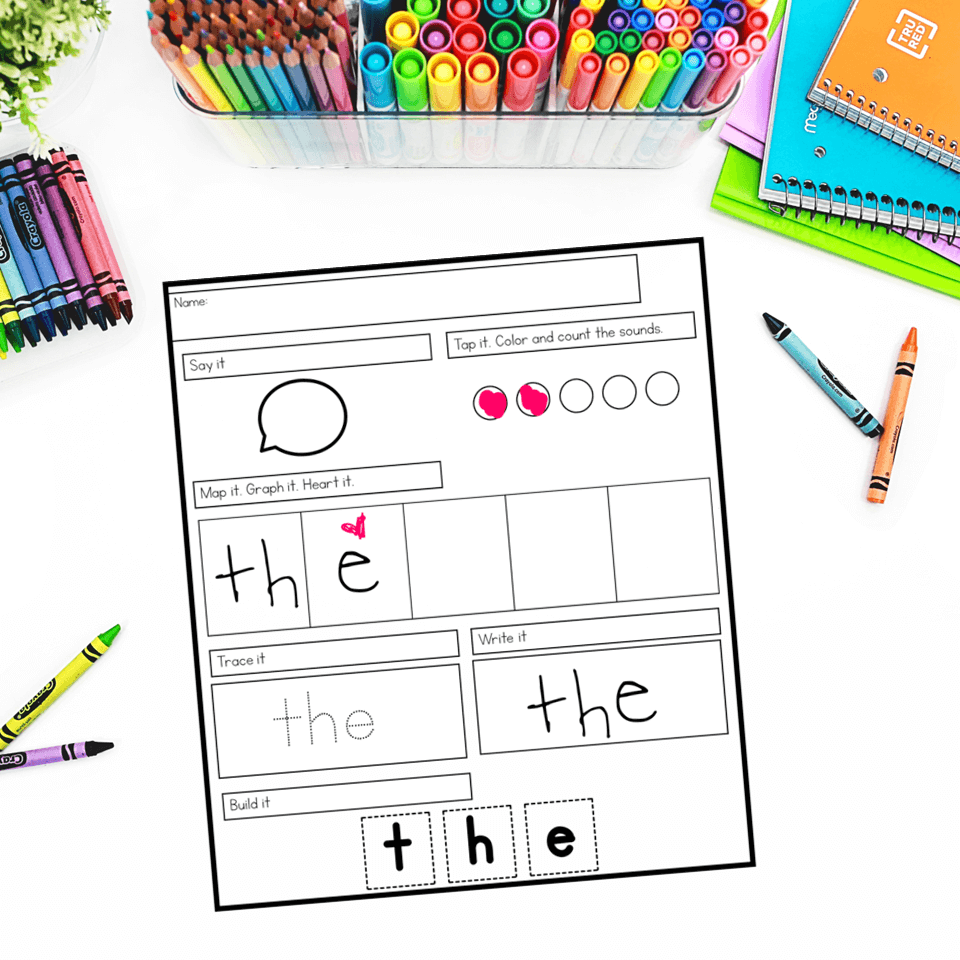
You can type in ANY words from your high frequency word list and the worksheets will magically create themselves.
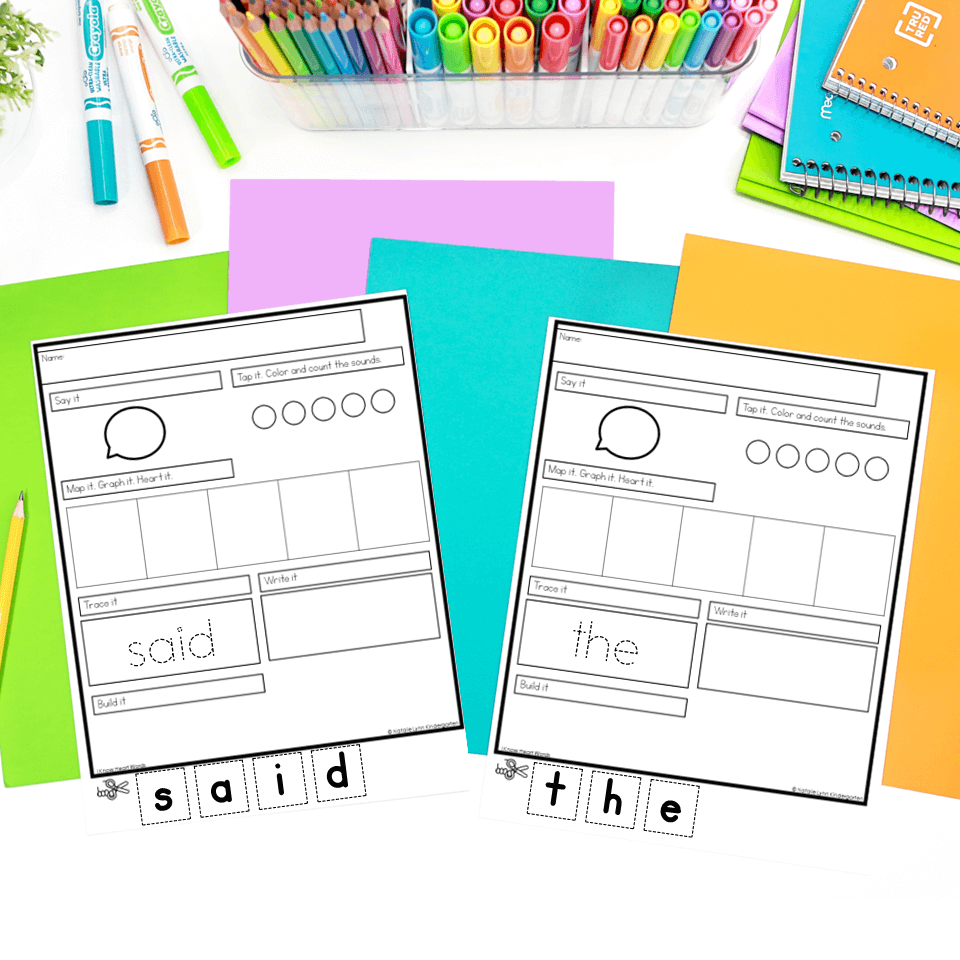
These free heart word worksheets will have students:
- Say the heart word
- Segment the word and count the sounds
- Map and graph the word
- Trace the heart word
- Write the heart word
- Cut out the letters and build the heart word
You can grab your FREE editable heart word worksheets here:
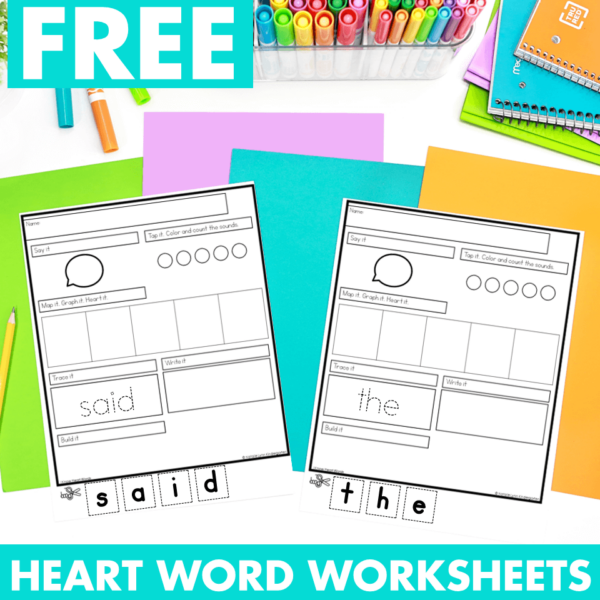
Do you love free stuff?
Editable Heart Word Worksheets
Use these editable heart word worksheets with ANY high frequency words! Just type in your words and watch them magically create themselves.
In conclusion
Teaching heart words doesn’t have to be complicated! Once you’ve learned how to teach heart words and gone through the steps of orthographic mapping with your heart words a few times, it becomes second nature quickly.
If you’re new to the science of reading and want to learn more, check out these blog posts:


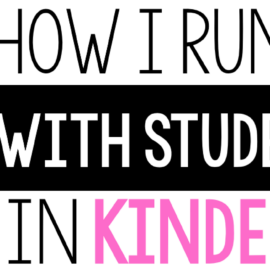

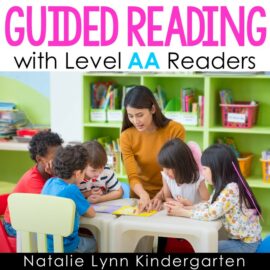

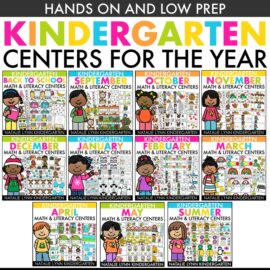
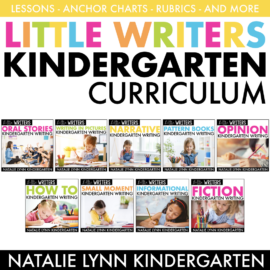
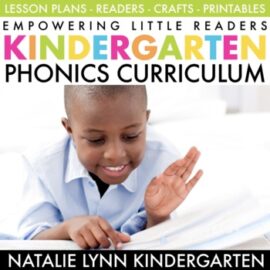
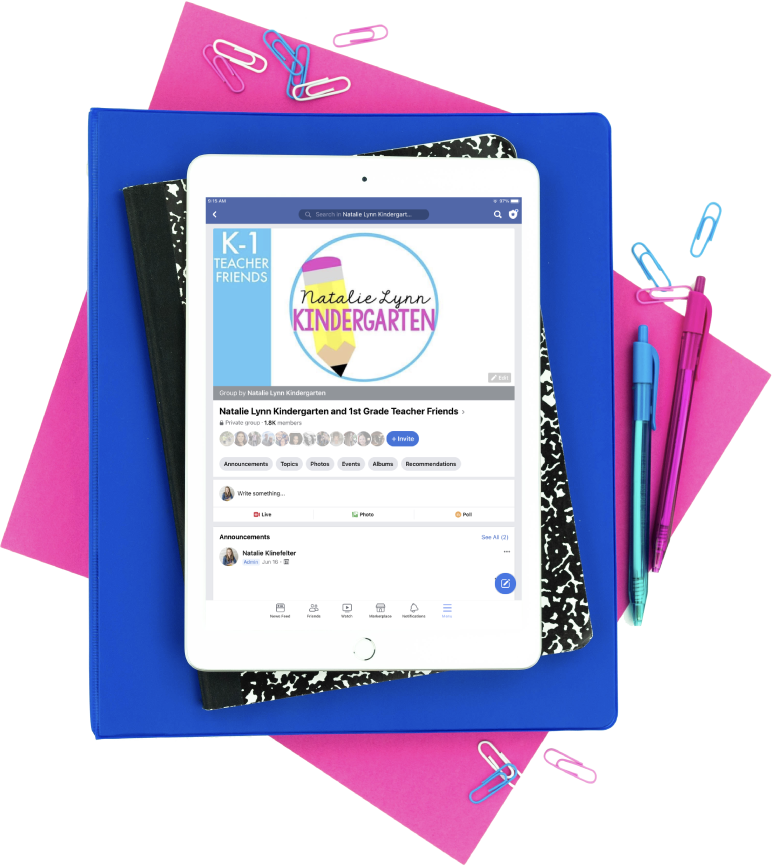

You did a very clear explanation of what SOR is and how to do it! Thanks
Thank you so much! I’m glad it was helpful!
Thank you for this Natalie,
I am really enjoying your blog posts and your freebies are amazing. Thank you for being so knowledgeable and so generous. It is really appreciated.
You’re welcome! I’m so glad you’ve enjoyed them!
Hello Natalie,
Thank you for such a concise explanation. I’m overwhelmed and really appreciate how dedicated you are to helping your fellow teachers. Your generosity is truly appreciated!
Warm regards,
Julie
So for a word like ‘the’ that is all heart sounds at the beginning, do I post it on the sound wall, and if so, where?
If you want to! You can post it in multiple spots or choose the one that makes the most sense to you.
I am trying to move away from structured reading groups…I have been doing skilled base but I would like it to be more choice driven to the students who are not meeting with me….more like a “must do, catch up, may do” while I am working with kiddos …while I want kids to be making their choices in the classroom when they are not meeting with me, I would like. it to still have structure and differentiation…if hat makes sense….currently groups are color coded based on their skills, etc….Thank you, Michelle
Hi Michelle! You might like one of my blog posts on free flowing centers. While mine were differentiated still, you give even more choice than I did.
Thank you so much for all your amazing resources! Do you have a photo example of what your heart word display looks like? I’d like to keep them separate from the sound wall if possible.
Hi! No photos, but I just used a pocket chart and then a bulletin board. Teaching Without Frills also has a great example of how she used a door.